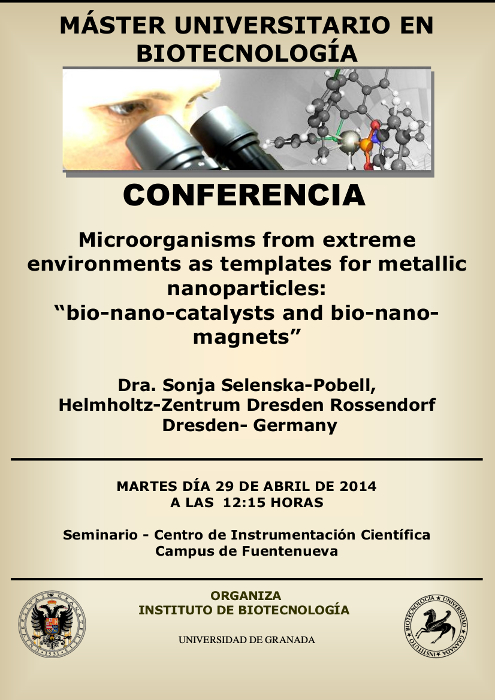- 24 Abril 2014
 Fecha: Martes 29 de Abril del 2014
Fecha: Martes 29 de Abril del 2014
Hora: 12.15 horas
Lugar: Seminario – Centro de Instrumentación Científica
Profesora: Dra. Sonja Selenska-Pobell, Helmholtz-Zentrum Dresden Rossendorf, Dresden, Germany
Master de Biotecnología, curso de “interacciones de metales pesados por microorganismos para fines de bioremediación”
Abstract:
Protein surface layers (S-layers) of one bacterium and one archaeon, both recovered from extreme environments, were used as templates for fabrication of gold nanoparticles. The two kinds of Au nanoclusters exhibit interesting but different physical properties.
The most striking difference is the strongly paramagnetic nature of the archaeal bio-Au, in contrast to the diamagnetic nature of the bacterial bio-Au.
Magnetic properties of the archaeal Au nanoparticles were studied by element-selective XANES and XMCD as well as by SQUID magnetometry. The results demonstrate that the particles are strongly paramagnetic. The average magnetic moment per particle is 2.4 mB. This moment originates at the particle`s Au 5d band, in which an increased number of holes with respect to bulk Au is observed by XMCD. The magnetic moment per Au atom is at least 25 times larger than values measured for Au nanoparticles fabricated on non-biological matrices.
In addition, the bacterial S-layer was used for fabrication of bio-Pd nanoclusters. These bio-Pd nanoparticles also possess unusual physical properties and can be used, for example, as bio-nano-catalysts.




